Fiber Optic Sensing Applications for Structural Health Monitoring
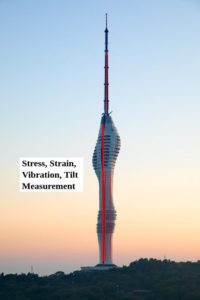
Fiber optic cables are used in various instrumentation applications to create sensors for different types of measurements, one of those applications is to monitor the structural health of different civil engineering structures such as buildings, bridges, tunnels etc. The structural health of an infrastructure can be described as its physical condition and state that affects its effective function and endurance. Monitoring structural health allows one to take appropriate precautions and actions to ensure the safety of the structure and allow it to endure over a long period of time. Fiber optic based sensing trumps other possible technologies as the glass fiber is not only robust to withstand harsh environments but the optical fiber is unaffected by any possible external electromagnetic interference, thus providing fiber optic based sensors more precision and accuracy in their results and long term durability for the sensor.
For most concrete based building structures the main factors to consider when it comes to its structural health monitoring inside the building itself are the formation of cracks and accumulated moisture inside the concrete. These lead to applied stress and strain that causes elongation and compression or variations of tilt and twisting pressures that compromise the molecular integrity of the structure. Fiber optic based sensors help detect these cracks and moisture to monitor the structural health of these building structures. The presence of excessive moisture overtime can create molecular space inside concrete slabs which trap air. This accumulation of air weakens the integral strength of the building structure. Similarly the presence of cracks, along with the effects of prolonged moisture, adversely affect the molecular integrity of the structure, making it prone to collapse and break down. Using fiber optic based sensors such drastic outcomes of collapse can be avoided with consistent and accurate observations of moisture and cracks in the building structure.
Humidity sensors to detect moisture levels can be designed using polymeric fiber based on polyvinyl alcohol hydrogel rods. Hydrogel expands in the presence of water which can create micro-bending effects on the rod. This attenuates the transmitter light and can be analyzed and processed using optical time-domain reflectometry. They can also be designed using Fiber Bragg Gratings coated in a polyimide. FBG sensors are based on gratings inside the cable that reflect specific wavelengths of light at certain “Bragg” wavelengths. Coated in similar hydroscopic material, these cables swell and bend in the presence of water and are used to detect moisture. The former has applications in distributed detection while the latter is used for single-point moisture detection.
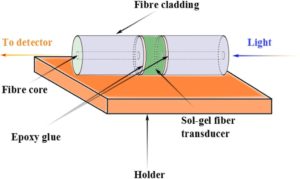
Reference: Photonic Humidity Sensor 1 and FBG Based Humidity Sensor 2
Fiber optic-based crack sensors can be based on numerous technologies such as the integration of single-mode optical fiber cables inside a textile net structure or FBG mechanical gauge based sensors. For the former, the structure transfers elongation and compression along itself for the cable to perform measurements while in the latter a fiber optic cable can be used alongside an FBG sensor to determine changes in displaced structure building blocks. Various applications of stress and vibrations that cause cracks in the structure can cause attenuation of the light which can be measured and analyzed.
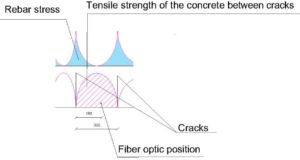
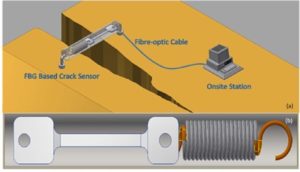
Reference: Fiber Optic Crack Sensor 3 and FBG Based Mechanical Crack Sensor 4
Fiber optic based sensors for structural health monitoring have many benefits over other
conventional methods to monitor civil engineering structures. Moisture and cracks are more
common features of observation alongside measurement of stress, strain and pressure. There can be numerous ways to use fiber optic technologies for these applications while designing new types of sensors with improved accuracy and precision when it comes to measurements, or newer models with other modes of technology that find other ways of structural health monitoring altogether.
The sky’s the limit. And light is the fastest that can get there!




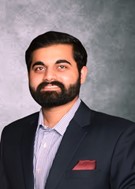 Muhammad Bin Sanaullah
Muhammad Bin Sanaullah